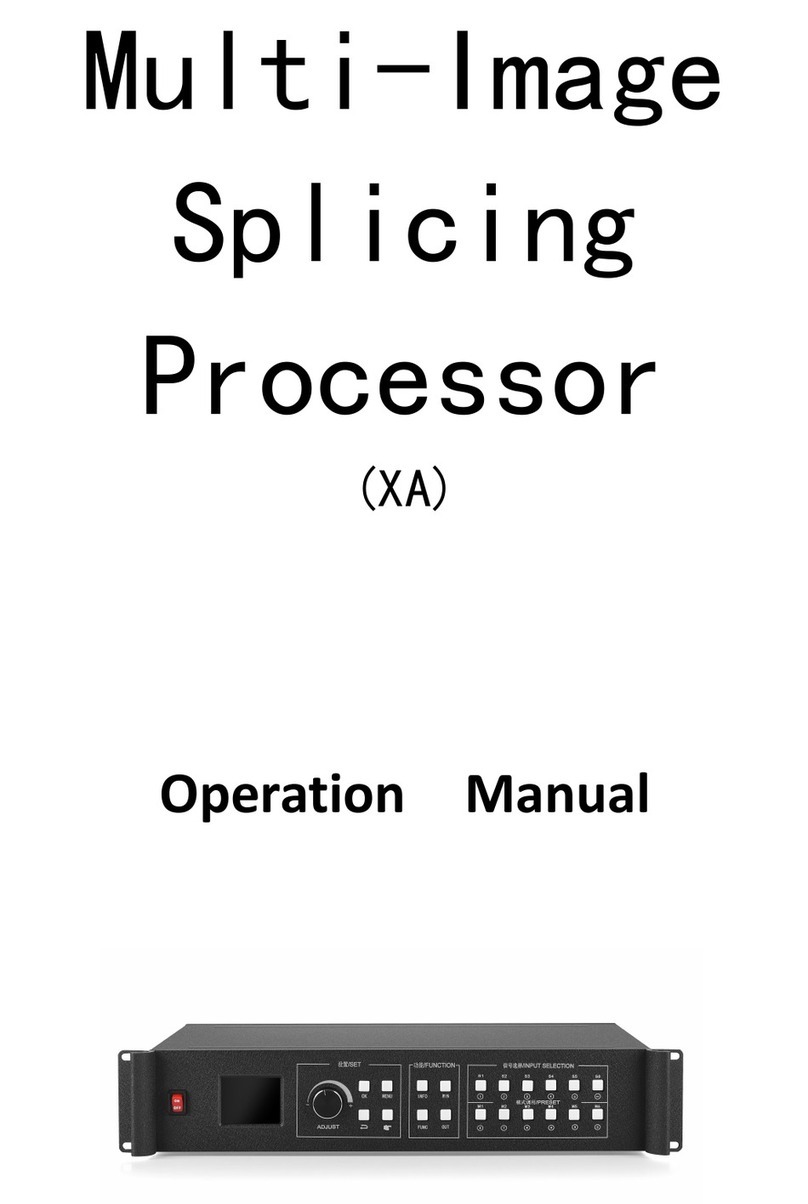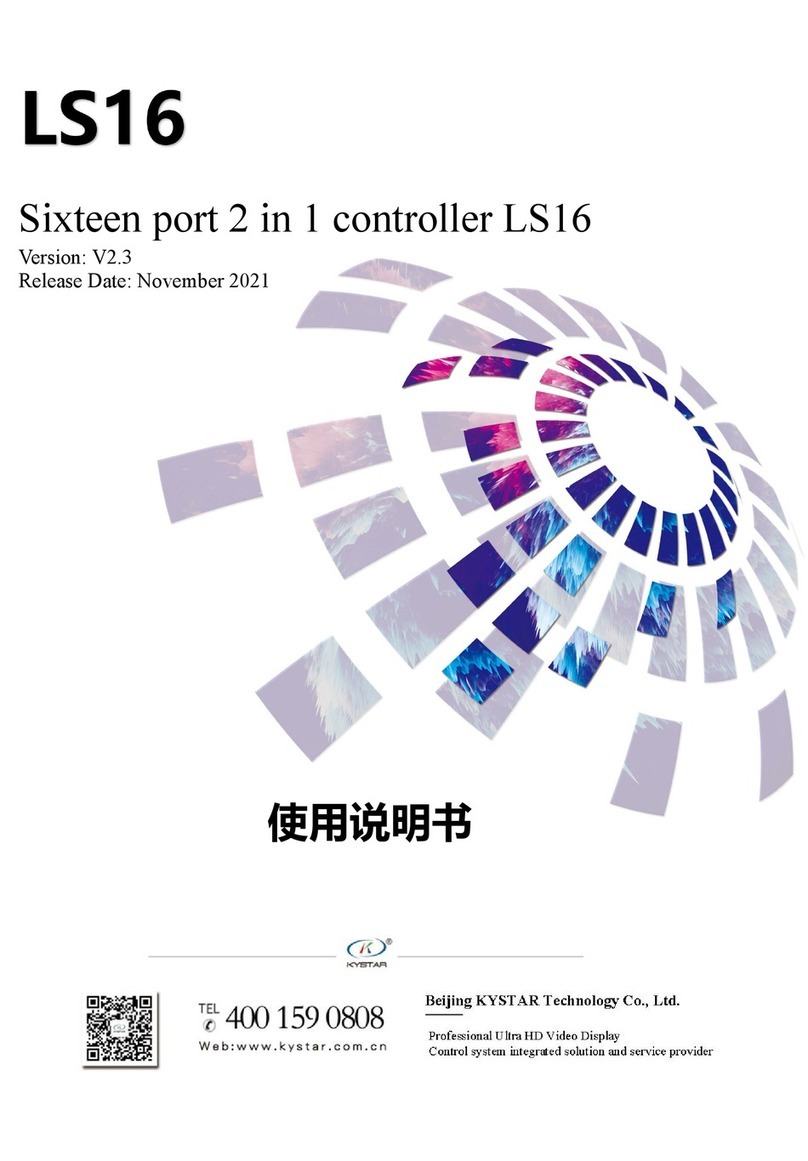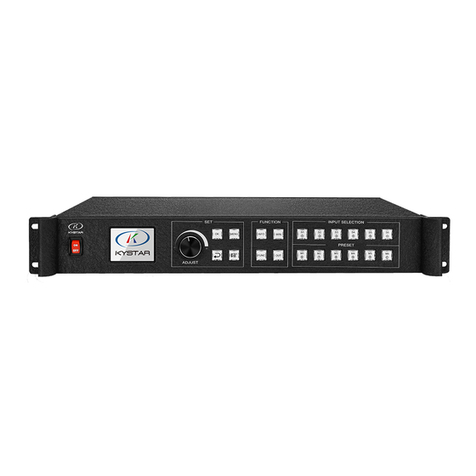
Multi-Image Splicing Processor User Manual
Statement
Thank you for using our company's products.
The copyright of this manual is owned by our company, Without any written permission from
our company, it is forbidden to copy, delivery, distribution or storage of content of this document
in any form..The company reserves the right of modifications and improvements of any product
function described in the document without prior notice.
This product may be accompanied by a related control software, which is only for your
usage, and the ownership of the software is owned by the company. You are allowed to copy the
software but only limited to your personal usage. If the software is to be applied to other purposes,
in particular commercial purposes, please contact our company. Our company reserves the right of
investigate and affix legal liabilities of any infringement act.
Please read the manual carefully before using. Any improper operation may cause damage to
the product. It is operated with electricity and sufficient attention should be attached. Our
company bears no responsibility for any property loss and personal injury incurred from any
improper operation failing to follow the instructions in the manual. If the provision herein
conflicts with local laws or regulations, the local laws or regulations shall prevail.
It means that you accept the statement above if you use the product. If not, please contact
with the seller and return the product following relevant procedures.
Certification Description
“CE” Certification
EN 55022:2010
EN 55024:2010
EN 61000-3-3:2013
EN 61000-3-3:2014
EN 0950-1:2006+A11:2009+A1:2010+A12:2011+A2:2013
“FCC” Certification
FCC Part 15
ANSI C63.4:2014
“ROHS” Certification
EPA 3050B:1996,EN1122:2001
EPA 3052:1996,EPA 3060A
EPA 7196,EPA 3540C,EPA 8270C
Version Information
Version: v3.1
Issue Date: February,2022


































